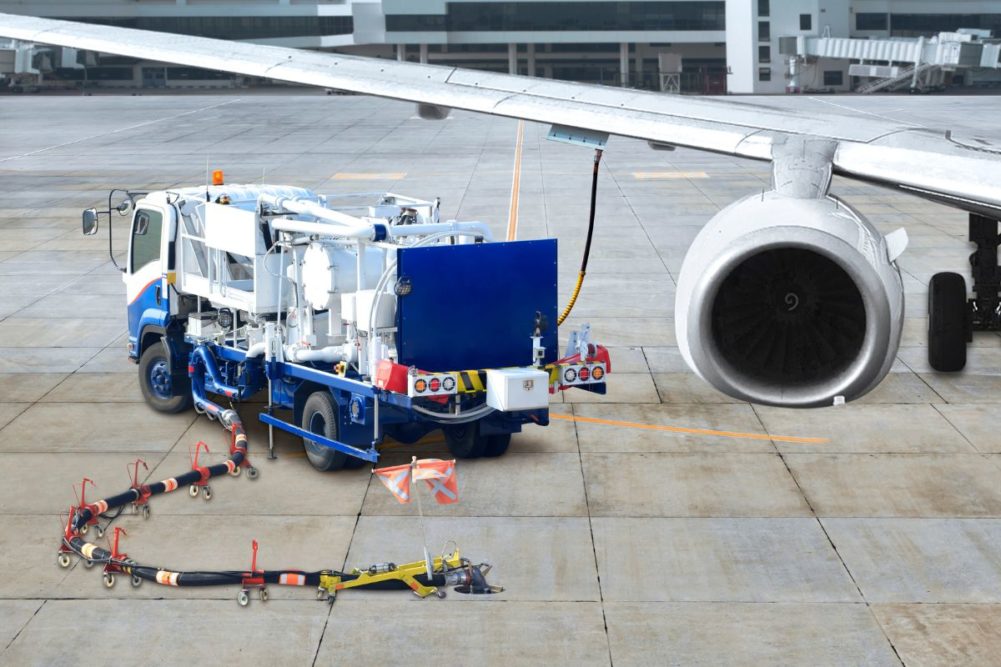KANSAS CITY, MISSOURI, US — Sustainable aviation fuel (SAF) seems like a miracle product. It has near net zero capacity as it can be fabricated from a variety of sources, including trash. It is referred to as a “drop-in” fuel, which means airlines do not need new or specialized infrastructure or engines to use the product.
When using SAF, airlines can reduce about 80% of their carbon dioxide emissions, according to the International Air Transport Association. Plus, demand for SAF is extremely high. Most airlines have stated they want to broadly incorporate SAF into their programs. But there are two familiar and traditional hurdles hindering this industry’s transition to more innovative and cleaner energy — supply and cost.
In 2023, US airline carriers consumed a total of 12.4 billion gallons of fuel, according to the US Department of Transportation. From January to July of this year, carriers used approximately 7.3 billion gallons of fuel, a consumption rate that is nearly 3% higher than the year before during the same period. Last year, the Federal Aviation Administration (FAA) estimated about 26.3 million gallons of SAF was produced in the United States, which is only about 1% of what is actually required by US carriers to achieve a 50% blend of SAF.
“There is just not nearly enough of it right now,” Jeff Davidman, vice president of government affairs at Delta Air Lines, told attendees at the recent Ag Outlook Forum in Kansas City, sponsored by Agri-Pulse and Agricultural Business Council of Kansas City. “This year, worldwide, we’re going to produce about 608 million gallons of SAF, but our airline alone uses 4 billion gallons of jet fuel every single year.”
SAF is an alternative fuel made from non-petroleum feedstocks, such as corn and oilseeds in the agriculture sector, that reduces emissions from air transportation. SAF can be blended at different levels with limits between 10% and 50%, depending on the feedstock and how the fuel is produced.
Production of SAF is growing at a surging rate and is expected to increase sharply as demand pressure from airlines and sustainability advocates fuel its growth. The FAA said SAF production in the United States rose from 2 million gallons in 2016 to 16 million gallons in 2022 then jumped to 26 million gallons in 2023. But even with global production expected to reach over 600 million gallons in 2024, that is still only about 1.2% of fuel required by airplanes worldwide to reach a 50% SAF jet fuel blend with airplanes projected to consume 99 billion gallons of fuel globally, according to data from the Global Outlook for Air Transport report published by the International Air Transport Association.
With the FAA encouraging airlines to adopt sustainability measures that include higher usage of SAF, scaling production at a soaring pace will need to happen before carriers can even consider integrating these goals. And this burden of scale lies squarely on the fuel producing sector.
“We’re talking about billions and billions of dollars,” Donnell Rehagen, chief executive office of Clean Fuels Alliance America, said at the Ag Outlook Forum. “A couple or three billion just to build one plant. These decisions can’t be made with just a flip of a coin. Federal policy, and increasingly state policy, is becoming more and more important and the more that those state and federal policies can complement each other versus go against each other, then you’ll have better chances at bringing that certainty to investors so they can make those important decisions to get this industry off the way the airlines need us to get it done.”
In the 2022 Inflation Reduction Act, the Biden administration allowed for a segment of tax credit for SAF sold or used after Dec. 31, 2022, and before Jan. 1, 2025. But Davidman said this timeline is too short to scale production the way the industry needs.
“Kudos to the federal government with the Inflation Reduction Act and providing the incentives the industry needs to get things up and running, but when you’re talking about these billion-dollar type investments that need to be made to develop the kinds of facilities that are going to be needed, they need more time,” Davidman said.
The price of SAF, which is currently between two and three times higher than conventional jet fuel, is also a deterrent to the airline industry. Davidman said this price load is not sustainable for airlines, but extended tax credits would help.
“We want this,” Davidman said. “We need this. But we need to work together to make this happen.”



